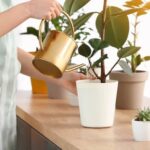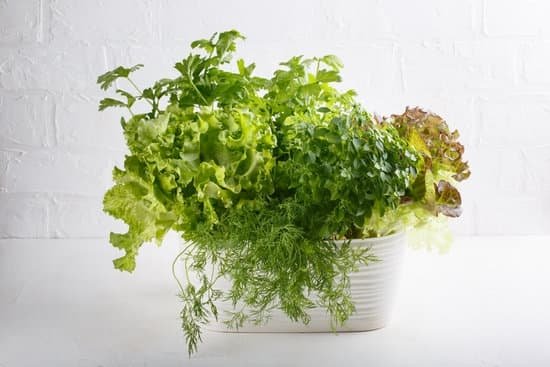Container gardening offers a versatile and convenient way to bring beautiful greenery and blooms into your living space, whether you have a sprawling backyard or a compact balcony. In this article, we will explore the endless possibilities of container gardening ideas, from choosing the right containers and plants to designing and maintaining your own lush oasis.
Whether you’re a seasoned gardener looking for new inspiration or a beginner interested in exploring the world of gardening, container gardening has something to offer everyone.
With container gardening ideas, you can unleash your creativity and add a personal touch to your outdoor or indoor space. From traditional terracotta pots to repurposed containers and hanging baskets, the options are truly limitless when it comes to creating your own unique garden paradise. In this introductory section, we will delve into the various aspects of container gardening, from selecting the perfect plants to troubleshooting common issues that may arise.
Join us as we embark on a journey through the wonderful world of container gardening, where you’ll learn how to transform even the smallest corner into a thriving green retreat. Get ready to discover the joys of container gardening and unlock the potential of your living space with our expert tips and advice. Whether you’re short on space or simply looking for a new hobby, container gardening offers endless possibilities for cultivating beauty and tranquility in any environment.
Choosing the Right Containers for Your Garden
When it comes to container gardening, choosing the right containers is crucial for the success of your garden. The type of container you choose can impact the growth and health of your plants, as well as the overall aesthetic of your garden space. Here are some tips for selecting the perfect containers for your garden:
- Consider the size: Make sure that the containers you choose are large enough to accommodate the root system of your plants. Most plants need at least 12 inches of soil depth to thrive.
- Drainage is key: Look for containers with adequate drainage holes to prevent waterlogged soil, which can lead to root rot. If your chosen container does not have drainage holes, you can always drill them yourself.
- Material matters: Different materials offer various benefits. For example, terracotta pots are porous and allow for better airflow but may dry out quickly, while plastic containers retain moisture but may not breathe as well. Consider factors such as weight, insulation, and durability when choosing the material for your containers.
In addition to traditional store-bought planters, consider thinking outside the box when it comes to container gardening ideas. Upcycling old items into unique planters can add a creative flair to your garden space while also being environmentally friendly. Some popular upcycled container options include mason jars, wooden crates, and even old tires.
Ultimately, the right container for your garden will depend on your specific needs and preferences. Whether you opt for classic terracotta pots or get crafty with DIY upcycled planters, choosing the right containers is an essential step in creating a thriving container garden. By keeping these tips in mind, you can ensure that your plants have a happy and healthy home in their new containers.
Selecting the Perfect Plants for Container Gardening
When it comes to selecting the perfect plants for your container garden, there are a few key factors to consider. One of the most important aspects is the size of the plant in relation to the size of the container. It’s essential to choose plants that won’t outgrow their containers too quickly and become root-bound. This means opting for smaller varieties or choosing plants that are well-suited for life in a confined space.
Another crucial consideration is the environmental conditions in which your container garden will be situated. Take into account factors such as sunlight exposure, temperature, and humidity levels when choosing your plants. Some plants thrive in sunny, hot conditions, while others prefer shadier or cooler environments. Make sure to select plants that are well-matched with the specific growing conditions of your chosen location.
Additionally, it’s important to think about the overall aesthetic you want to achieve with your container garden. Consider the colors, textures, and heights of different plant varieties when planning your arrangement. Mixing and matching various plants can create a visually appealing and dynamic container garden display. Don’t be afraid to get creative and experiment with different combinations to find what works best for you.
With these considerations in mind, there are countless options for suitable container gardening ideas. From vibrant flowers like petunias and geraniums to culinary herbs like basil and thyme, the possibilities are endless for creating a beautiful and thriving container garden.
| Aspect | Description |
|---|---|
| Size of the plant | Choose smaller varieties or plants suited for confined spaces |
| Environmental conditions | Select plants well-matched with sunlight exposure, temperature, and humidity levels |
| Aesthetics | Consider colors, textures, and heights for a visually appealing display |
Designing Your Container Garden
When it comes to designing a container garden, there are a few key tips and tricks that can help you create a beautiful and flourishing display. First, consider the height and spread of the plants you choose – tall plants should be placed at the back or center of the container, while trailing or low-growing plants can be placed around the edges. This will create a visually appealing arrangement that is both balanced and dynamic.
Another important aspect of designing your container garden is considering color, texture, and form. Try to select a mix of plants that offer variety in these areas – for example, pairing bold, colorful flowers with more delicate, finely textured foliage. This will add visual interest to your container garden and make it a true standout in any space.
In addition to plant selection and arrangement, don’t forget about the container itself. The material, size, and style of your containers can have a big impact on the overall look of your garden. Consider using different sizes and shapes of containers to create depth and dimension in your design. You can even get creative with upcycling old items into unique planters, adding an extra personal touch to your container gardening ideas.
| Designing Tips | Tricks |
|---|---|
| Consider plant height and spread for placement | Select a mix of plants for color, texture, and form |
| Choose containers with different sizes and shapes | Get creative with upcycling old items into unique planters |
Maintaining Your Container Garden
Watering Your Container Garden
Proper watering is crucial for the success of your container garden. The type of soil, the size and material of the container, and the weather conditions will all impact how often you need to water your plants. In general, it’s best to check the soil moisture regularly by sticking your finger into the soil.
If it feels dry about an inch below the surface, it’s time to water. Always water thoroughly until you see water coming out of the drainage holes at the bottom of the container.
Fertilizing Your Container Garden
Container-grown plants have limited access to nutrients compared to those in open ground. It’s important to provide them with a regular supply of fertilizer to ensure healthy growth and development. Choose a slow-release or liquid fertilizer specifically formulated for container plants and follow the instructions on the label. Generally, you’ll want to fertilize your container garden every 4-6 weeks during the growing season.
Pruning Your Container Garden Plants
Regular pruning not only helps control the size and shape of your container garden plants but also promotes better air circulation and reduces disease risk. Use clean, sharp pruners or scissors to remove dead or damaged foliage, spent flowers, or overgrown stems. Pruning can also encourage new growth and flowering in many plant varieties. Be sure to research specific pruning needs for each type of plant in your container garden and prune accordingly.
By following these tips for watering, fertilizing, and pruning your container garden, you can help ensure that your plants thrive throughout their growing season.
Creative Container Ideas
Looking for creative ways to add some flair to your container garden? Upcycling and DIY projects are the perfect solution for giving your garden a personalized touch. Not only do these methods allow you to express your creativity, but they also promote sustainability by reducing waste. With a little ingenuity and some basic materials, you can transform everyday items into unique planters that will make your container garden stand out.
One option for upcycling in container gardening is using old wooden crates or pallets to create rustic, charming planters. By sanding down rough edges and adding a coat of paint or stain, you can easily repurpose these items into stylish containers for your plants.
Another popular choice is utilizing old tin cans, mason jars, or tea tins as whimsical planters. By drilling drainage holes in the bottom of these containers and adding some decorative embellishments, you can create a one-of-a-kind look for your container garden.
If you’re feeling particularly crafty, consider embarking on some DIY projects to elevate your container garden. Building custom wooden planters or constructing vertical gardening systems are great ways to showcase your green thumb while adding visual interest to your outdoor or indoor space.
Additionally, creating hanging planters using macramé or repurposing household items like shoe organizers can provide unique solutions for maximizing space in small areas. The possibilities are endless when it comes to incorporating upcycled and DIY elements into your follow noopener”>container gardening ideas.
Best Practices for Container Gardening in Small Spaces
When it comes to container gardening in small spaces, there are a few best practices that can help maximize your success and enjoyment of this rewarding hobby. Whether you have a small balcony, patio, or even just a windowsill, container gardening can bring natural beauty and freshness to even the most limited of spaces. Here are some tips for making the most of your container garden in a small area.
Utilize Vertical Space
In a small space, it’s important to make the most of vertical space when planning your container garden. Consider using hanging baskets, wall-mounted planters, or tiered shelving to add more growing area without taking up valuable floor space. Vining plants such as cherry tomatoes, beans, or even strawberries can thrive in vertical planters and provide a bountiful harvest without encroaching on limited square footage.
Choose Compact and Dwarf Varieties
When selecting plants for your container garden in a small space, opt for compact or dwarf varieties whenever possible. Many vegetable and herb varieties are available in dwarf forms that are well-suited for growing in containers and require less space to flourish. Additionally, look for ornamental plants with a more compact growth habit to ensure they won’t outgrow their containers too quickly.
Maximize Sunlight
In a small space, every bit of sunlight counts. Pay attention to the sunlight patterns on your balcony or patio throughout the day and position your containers accordingly. Keep in mind that walls or nearby buildings may cast shadows at certain times of day, so be strategic about where you place your plants to ensure they receive adequate sunlight for healthy growth.
By implementing these best practices for container gardening in small spaces, you can create a thriving mini-garden that brings joy and greenery to even the tiniest urban oasis. Whether you use vertical planters, choose compact varieties, or carefully position your containers for maximum sunlight exposure – there are plenty of ways to make the most of limited space when it comes to container gardening ideas.
Troubleshooting Common Issues in Container Gardening
Are you experiencing some issues with your container garden? Don’t worry, it’s common for gardeners to face challenges along the way. Here are some common problems and solutions to help troubleshoot any issues you may be encountering:
1. Overwatering or Underwatering: One of the most common issues in container gardening is improper watering. It’s crucial to find the right balance for your plants, as both overwatering and underwatering can lead to root rot or dehydration. To avoid these problems, consider using a moisture meter to test the soil’s moisture level before watering.
2. Poor Drainage: If you notice that your plants are wilting, yellowing, or developing fungal diseases, it could be due to poor drainage in your containers. Ensure that your pots have adequate drainage holes at the bottom. You can also add a layer of gravel or small rocks at the base of the container to improve drainage.
3. Pests and Diseases: Container gardens are not immune to pests and diseases. Keep an eye out for signs of infestation or disease such as nibbled leaves, yellow spots, or webbing on plants. Consider using natural remedies like neem oil spray or introducing beneficial insects like ladybugs to keep pests at bay.
4. Nutrient Deficiency: If you notice that your plants’ growth is stunted or their leaves are turning yellow, it may be a sign of nutrient deficiency. Consider fertilizing your container garden with a balanced fertilizer specifically formulated for container plants to provide them with essential nutrients.
By addressing these common issues with proper care and attention, you can ensure that your container garden thrives and flourishes, bringing beauty and joy to your living space.
Conclusion
In conclusion, container gardening is a versatile and rewarding way to bring the beauty of nature into any space, whether it’s a small apartment balcony or a spacious backyard. The possibilities for creative container gardening ideas are endless, and with the right knowledge and care, anyone can enjoy a thriving garden in containers.
By choosing the right containers, selecting the perfect plants, designing with creativity, and maintaining with dedication, your container garden can flourish and bring you joy for years to come.
One of the greatest benefits of container gardening is its ability to adapt to small spaces. Whether you live in an urban apartment or have limited outdoor space, container gardening allows you to make the most out of what you have.
With some creativity and strategic planning, you can turn even the smallest balcony or patio into a green oasis. From hanging baskets to vertical gardens, there are countless innovative container gardening ideas that can help maximize your space while still enjoying the beauty of a garden.
Another important aspect of successful container gardening is troubleshooting common issues that may arise. From pest control to proper drainage, being prepared for potential challenges can help ensure that your plants remain healthy and vibrant. With a little knowledge and proactive care, you can address these obstacles and continue growing and thriving with your container garden.
Overall, container gardening offers individuals the opportunity to connect with nature and cultivate their own little piece of paradise right at home. Whether you’re just starting out or are already an experienced gardener, there are always new ideas and techniques to explore in order to create a flourishing container garden.

Welcome to my gardening blog! I am passionate about plants and enjoy sharing my knowledge and experiences with others. In this blog, I will write about everything related to gardening, from tips on how to get started to updates on my own garden projects.





